Gianmarco Cerutti
Sub-mW Keyword Spotting on an MCU: Analog Binary Feature Extraction and Binary Neural Networks
Jan 10, 2022
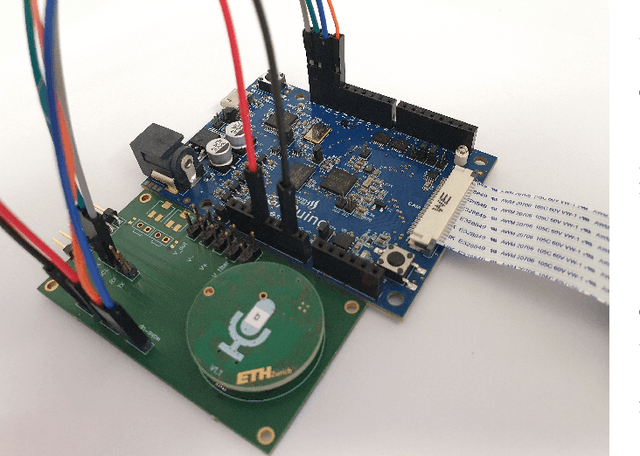
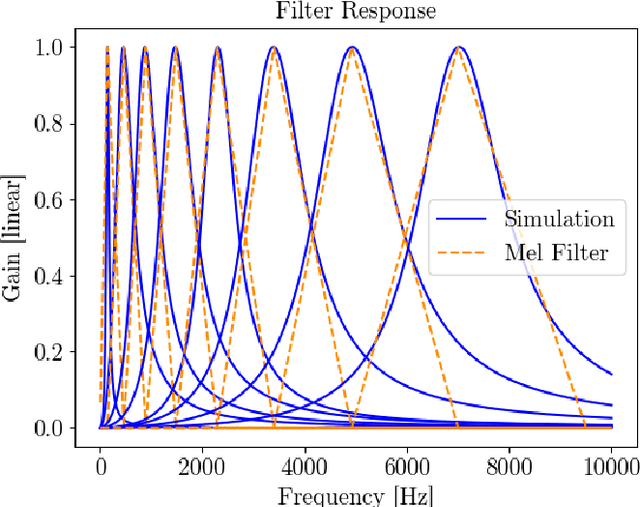
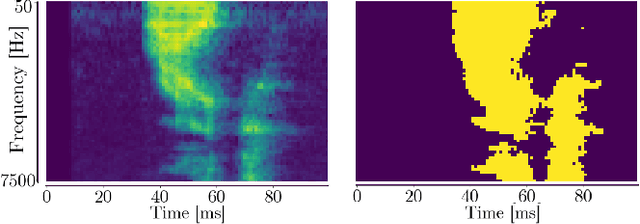
Abstract:Keyword spotting (KWS) is a crucial function enabling the interaction with the many ubiquitous smart devices in our surroundings, either activating them through wake-word or directly as a human-computer interface. For many applications, KWS is the entry point for our interactions with the device and, thus, an always-on workload. Many smart devices are mobile and their battery lifetime is heavily impacted by continuously running services. KWS and similar always-on services are thus the focus when optimizing the overall power consumption. This work addresses KWS energy-efficiency on low-cost microcontroller units (MCUs). We combine analog binary feature extraction with binary neural networks. By replacing the digital preprocessing with the proposed analog front-end, we show that the energy required for data acquisition and preprocessing can be reduced by 29x, cutting its share from a dominating 85% to a mere 16% of the overall energy consumption for our reference KWS application. Experimental evaluations on the Speech Commands Dataset show that the proposed system outperforms state-of-the-art accuracy and energy efficiency, respectively, by 1% and 4.3x on a 10-class dataset while providing a compelling accuracy-energy trade-off including a 2% accuracy drop for a 71x energy reduction.
Sound Event Detection with Binary Neural Networks on Tightly Power-Constrained IoT Devices
Jan 12, 2021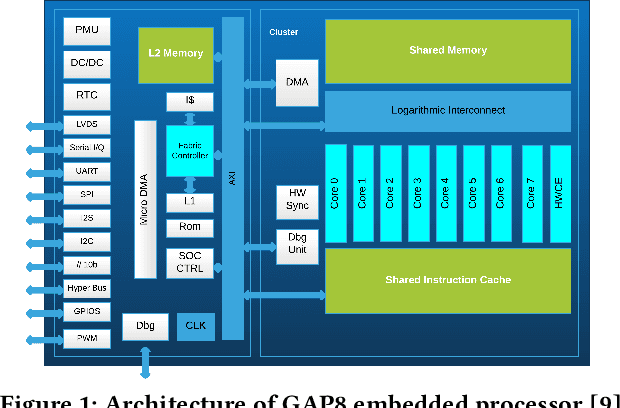
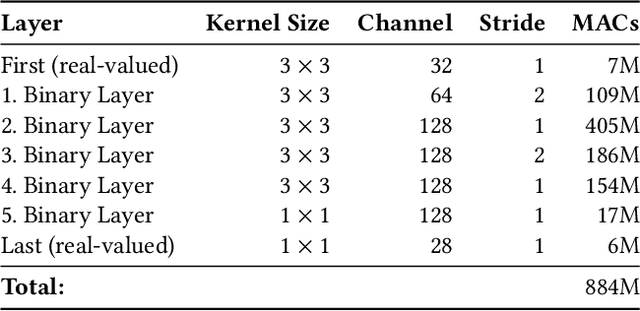
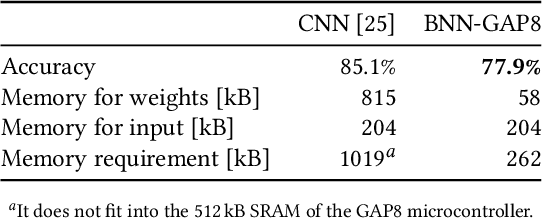
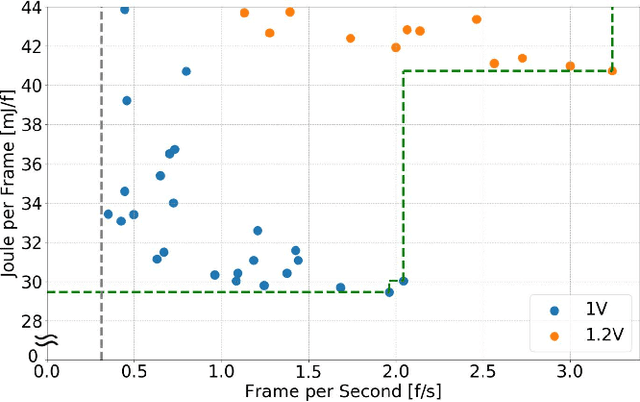
Abstract:Sound event detection (SED) is a hot topic in consumer and smart city applications. Existing approaches based on Deep Neural Networks are very effective, but highly demanding in terms of memory, power, and throughput when targeting ultra-low power always-on devices. Latency, availability, cost, and privacy requirements are pushing recent IoT systems to process the data on the node, close to the sensor, with a very limited energy supply, and tight constraints on the memory size and processing capabilities precluding to run state-of-the-art DNNs. In this paper, we explore the combination of extreme quantization to a small-footprint binary neural network (BNN) with the highly energy-efficient, RISC-V-based (8+1)-core GAP8 microcontroller. Starting from an existing CNN for SED whose footprint (815 kB) exceeds the 512 kB of memory available on our platform, we retrain the network using binary filters and activations to match these memory constraints. (Fully) binary neural networks come with a natural drop in accuracy of 12-18% on the challenging ImageNet object recognition challenge compared to their equivalent full-precision baselines. This BNN reaches a 77.9% accuracy, just 7% lower than the full-precision version, with 58 kB (7.2 times less) for the weights and 262 kB (2.4 times less) memory in total. With our BNN implementation, we reach a peak throughput of 4.6 GMAC/s and 1.5 GMAC/s over the full network, including preprocessing with Mel bins, which corresponds to an efficiency of 67.1 GMAC/s/W and 31.3 GMAC/s/W, respectively. Compared to the performance of an ARM Cortex-M4 implementation, our system has a 10.3 times faster execution time and a 51.1 times higher energy-efficiency.
Compact recurrent neural networks for acoustic event detection on low-energy low-complexity platforms
Jan 29, 2020



Abstract:Outdoor acoustic events detection is an exciting research field but challenged by the need for complex algorithms and deep learning techniques, typically requiring many computational, memory, and energy resources. This challenge discourages IoT implementation, where an efficient use of resources is required. However, current embedded technologies and microcontrollers have increased their capabilities without penalizing energy efficiency. This paper addresses the application of sound event detection at the edge, by optimizing deep learning techniques on resource-constrained embedded platforms for the IoT. The contribution is two-fold: firstly, a two-stage student-teacher approach is presented to make state-of-the-art neural networks for sound event detection fit on current microcontrollers; secondly, we test our approach on an ARM Cortex M4, particularly focusing on issues related to 8-bits quantization. Our embedded implementation can achieve 68% accuracy in recognition on Urbansound8k, not far from state-of-the-art performance, with an inference time of 125 ms for each second of the audio stream, and power consumption of 5.5 mW in just 34.3 kB of RAM.
 Add to Chrome
Add to Chrome Add to Firefox
Add to Firefox Add to Edge
Add to Edge